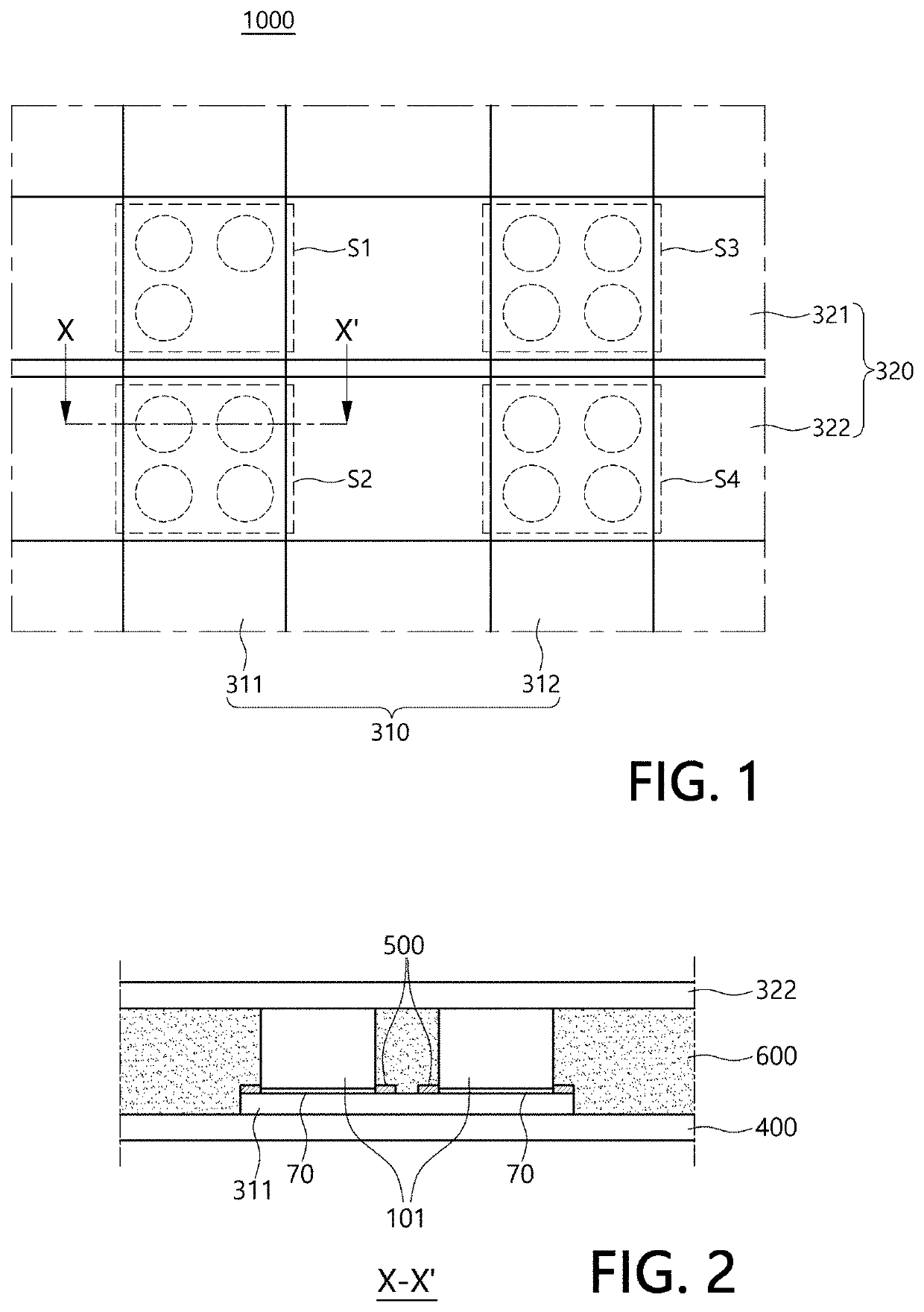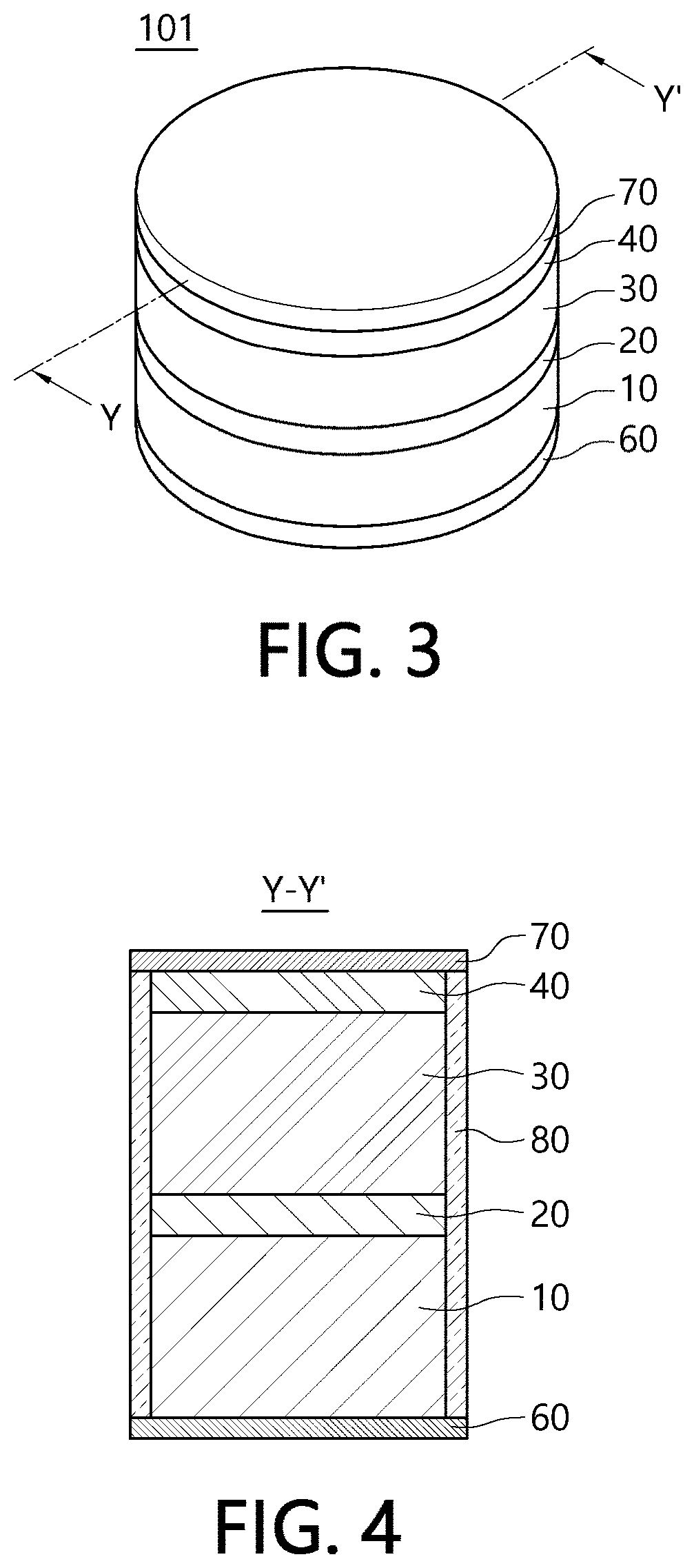Ultra-thin LED electrode assembly and method for manufacturing thereof
a technology of led electrodes and assembly, which is applied in the direction of basic electric elements, electrical equipment, semiconductor devices, etc., can solve the problems of difficult to manufacture an electrode assembly, difficult to implement led elements with ink, and more difficult to individually dispose of nano-leds
- Summary
- Abstract
- Description
- Claims
- Application Information
AI Technical Summary
Benefits of technology
Problems solved by technology
Method used
Image
Examples
preparation example 1
[0161]A common LED wafer (Epistar) in which an undoped n-type III-nitride semiconductor layer, an n-type III-nitride semiconductor layer doped with Si (a thickness of 4 μm), a photoactive layer (a thickness of 0.45 μm), and a p-type III-nitride semiconductor layer (a thickness of 0.05 μm) are sequentially stacked on a substrate was provided. ITO (a thickness of 0.15 μm) as a first electrode layer, SiO2 (a thickness of 1.2 μm) as a first mask layer, and Al (a thickness of 0.2 μm) as a second mask layer were sequentially deposited on the prepared LED wafer, and a spin on glass (SOG) resin layer onto which a pattern is transferred was transferred onto the second mask layer using nanoimprint equipment. Then, the SOG resin layer was cured using RIE, and the residual resin portion of the resin layer was etched through RIE to form a resin pattern layer. Then, the second mask layer was etched according to the pattern, using ICP and the first mask layer was etched using RIE. Next, after the ...
experimental example 1
[0164]Each of the LED element assemblies manufactured in Preparation Example 1 and Comparative Preparation Example 1 was put into acetone, and dispersed by being irradiated with ultrasonic waves under a 100 W condition, and then a dispersion state of the LED element was confirmed by measuring absorbance at 15 minute intervals for 2 hours, and a spectral area of the visible light region of 380˜780 nm was normalized using the measured results to be shown as an absorbance graph over time as shown in FIG. 20.
[0165]As can be seen from FIG. 20, it can be seen that an ultra-thin LED element according to Example 1 has excellent dispersion retention in the acetone solvent for a long time compared to the rod-type LED element according to Comparative Example 1.
example 1
[0166]An ultra-thin LED element aggregate manufactured in the same manner as the ultra-thin LED element manufactured in Preparation Example 1, and further formed with a Ti / Au layer (a thickness of 10 nm / 100 nm) as an electrode layer on the first electrode layer and then formed with a bonding layer with exposed thiol groups by treating 1,2-ethanedithiol on the Ti / Au layer before separating from the LED wafer through ultrasonic waves was prepared
[0167]Then, the ultra-thin LED elements were assembled upright on the first electrodes for a predetermined time by immersing a lower electrode line including the first electrodes in an ink composition containing the ultra-thin LED element aggregate. At this time, an ultra-thin LED element having a diameter of 750 nm and a height of 1.1 μm was used as the ultra-thin LED element. Then, after forming SiO2 (1.4 μm to 1.6 μm) as an insulating layer for serving as an insulator, an ultra-thin LED electrode aggregate having a lateral length and a long...
PUM
 Login to View More
Login to View More Abstract
Description
Claims
Application Information
 Login to View More
Login to View More - R&D
- Intellectual Property
- Life Sciences
- Materials
- Tech Scout
- Unparalleled Data Quality
- Higher Quality Content
- 60% Fewer Hallucinations
Browse by: Latest US Patents, China's latest patents, Technical Efficacy Thesaurus, Application Domain, Technology Topic, Popular Technical Reports.
© 2025 PatSnap. All rights reserved.Legal|Privacy policy|Modern Slavery Act Transparency Statement|Sitemap|About US| Contact US: help@patsnap.com



